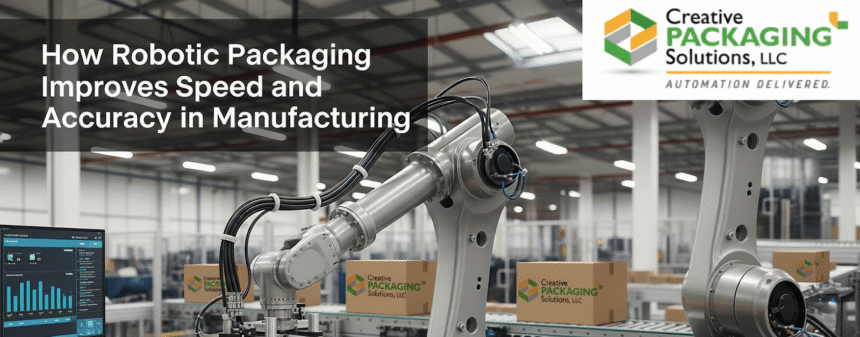In today’s fast-paced manufacturing environment, companies are under increasing pressure to deliver products faster, with greater consistency, and at lower costs. Traditional manual packaging processes often struggle to keep up with these demands, especially when faced with high-volume production lines or complex packaging requirements. This is where robotic packaging has emerged as a game-changer, offering manufacturers a powerful way to boost both speed and accuracy.
Why Robotic Packaging Matters
Robotic packaging refers to the use of automated robotic systems—often equipped with advanced sensors, vision technology, and AI-driven controls—to handle packaging tasks such as picking, placing, wrapping, sealing, labeling, and palletizing. Unlike manual operations, robotic systems are designed to work with precision and consistency over extended periods, significantly reducing the risk of human error and fatigue.
Improving Speed in Manufacturing
One of the most immediate benefits of robotic packaging is the increase in production speed. Robots can:
Operate continuously – Unlike human workers, robots don’t need breaks, which allows for 24/7 production.
Handle repetitive tasks quickly – Automated systems excel at repetitive motions such as carton filling or bottle capping, performing them faster than manual labor.
Adapt to demand surges – With programmable systems, production speeds can be scaled up or adjusted to meet seasonal or market-driven demand.
For industries like food and beverage, where products need to be packaged and shipped rapidly to meet shelf-life requirements, this speed can make a significant impact on competitiveness.
Achieving Unmatched Accuracy
Accuracy is another area where robotic packaging shines. Advanced robotics equipped with machine vision can identify, orient, and place products with remarkable precision. This leads to:
Consistent packaging quality – Each item is packaged to the same standard, reducing product damage or mislabeling.
Fewer errors and recalls – Automated barcode scanning and label placement help ensure compliance with strict regulations in industries such as pharmaceuticals.
Reduced material waste – With precise cutting, sealing, and wrapping, packaging materials are used efficiently, lowering costs and supporting sustainability efforts.
For example, in electronics or medical device manufacturing, even small packaging errors can result in costly setbacks. Robotic systems dramatically lower that risk.
The Role of Flexibility
Modern robotic packaging systems aren’t just fast and accurate—they’re also highly flexible. Today’s robots can be reprogrammed or fitted with different end-of-arm tools to handle a variety of packaging formats. This flexibility makes it easier for manufacturers to adapt to changing consumer preferences, such as the shift toward smaller, more personalized packaging or the demand for eco-friendly materials.
Looking Ahead
The integration of robotics into packaging is only expected to grow. With advancements in artificial intelligence, machine learning, and the Internet of Things (IoT), robotic packaging systems are becoming smarter and more connected. Future systems may be capable of predicting maintenance needs, optimizing production flows in real-time, and collaborating seamlessly with human workers on hybrid production lines.
Final Thoughts
For manufacturers aiming to remain competitive, robotic packaging offers more than just automation—it represents a strategic investment in speed, accuracy, and long-term efficiency. By reducing errors, improving productivity, and providing the flexibility to adapt to new demands, robotic packaging systems are helping industries across the globe reimagine what’s possible on the production floor.







